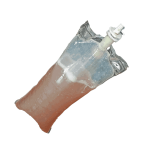Clean Culture and Cytology – Perhaps Not So Clean?
For many years, the standard pre-breeding evaluation included a uterine swab culture alone. It was then determined that allegedly “clean” mares were not becoming pregnant, and further investigation showed that there were inflammatory cells present in the uterus, indicating some sort of irritant – usually a pathogen missed with the swabbing for culture. As a result of this, the cytology smear was added to the pre-breeding tool chest (although sadly, all too often it is still omitted during pre-breeding evaluation!) Other improvements caused sample-gathering methods to swing away from the swab to the cytology brush, and for even better collecting, the low-volume lavage. These improved techniques have all assisted in increasing pregnancy rates while reducing breeding costs. Biofilm presence in the uterus has previously been confirmed as having the potential to impact reliability of pre-breeding pathogenic evaluation, but what about other secretions found in the uterus? Can a pre-harvesting treatment with something such as the biofilm reducer N-acetylcysteine improve diagnostic reliability further? Lu et al. investigated this.
Fifty-nine mares which had failed to become pregnant the previous year were used as the research animals. All mares underwent a uterine lavage with one liter of Lactated Ringer’s Solution, the captured eflux being evaluated for inflammatory cell and bacterial presence, and measured turbidity as well as visual appearance. Following the lavage, the mares were infused with 3.3% N-acetylcysteine. The following day, the lavage with LRS was repeated, and the eflux again evaluated.
The differences in results between the two days of sampling was significant. While on the first day 81% of samples had negative cytology, this was reduced to only 27% the next day. Bacteriologically, on the first day 63% of samples had no growth, with 20% having scant, 10% light, 7% moderate growth, and none with heavy growth. On the next day, these levels had changed to 31%, 25%, 15%, 24% and 5% respectively. Turbidity – the degree of clarity or opacity – was measured objectively using a spectrophotometer (a device which measures the amount of light passing through a liquid) normally used for determination of sperm concentration. A positive/negative cutoff level of 50 million cells/ml was used. It was found that all mares showing an increase in turbidity, going from “negative” to “positive”, also showed an increase in bacterial culture level.
Overall, 81% of mares (48/59) which showed “clear” cytology and no or minimal bacterial presence in culture subsequently presented with inflammatory cell and bacterial presence following the infusion of N-acetylcysteine. In a clinical practice, without the additional infusion, these mares would likely have been identified as “clean” and bred, with almost certainly minimal or no resulting pregnancies, and yet following the N-acetylcysteine infusion, 17 of these mares showed inflammatory cell and increased bacterial presence. Additionally, after this increased diagnostic evaluation method with the infusion of the N-acetylcysteine, at least 51 of the mares in the research (not all were reported) had established pregnancy at the 14-day check, with over half of them becoming pregnant on the first breeding cycle.
Our comment: while it may be argued that the lavage with LRS and infusion of the N-acetylcysteine on the first day could have contributed to the elevated inflammatory cell presence on the next day – or even the bacterial level changes – the significant numbers and statistical levels are indicative of this being unlikely. The addition of a pre-harvesting infusion of N-acetylcysteine improves diagnostic reliability in particular in “problem mares”, presenting an easy and cheap addition to the diagnostic toolbox, as well as having a positive impact overall on pregnancy rates.
(Lu KG, Von Dollen KA, Wolfsdorf KE, Fedorka C, Elam J, Levkulic S. 2023. Impact of N-acetylcysteine infusion on detection of bacterial endometritis in mares. JEVS 125:104728)




